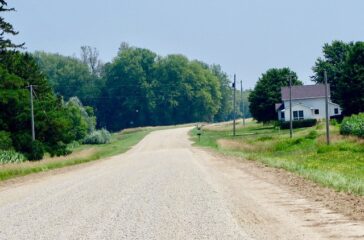Could farm fertilizers be driving Corn Belt cancers?
By Keith Schneider
BERNE, Minn. – It was a hot afternoon in mid-July and 60-year-old Brian Bennerotte was making a pilgrimage of sorts, navigating a shotgun-straight, gravel road south of Minneapolis on a journey through a landscape stitched with crop and livestock farms as far as the eye can see.
Bennerotte is one of only three surviving members of a family who farmed for three generations along a mile-long stretch of County Road B. As a long-haul truck driver, Bennerotte rarely gets back here. But with a visitor at his side, he finds his way.
From the passenger seat of a rented vehicle he scans both sides of the road, then points to a dust-scoured barn leaning into the wind. The building is all that remains of his family’s farmstead, which once encompassed 200 acres and a home large enough for Bennerotte’s parents to raise five boys and a girl.
Down the road a bit further, he recognizes neighboring properties: There is the Glarner farm, and the Spreiter farm and the Serie farm. All are connected by circumstances of geography, topography, agriculture, and social commerce.
All are also joined by disease and death.
Among the four families who lived for decades along County Road B, 12 people developed cancer and seven died. Bennerotte was one of three people who developed lymphoma. The disease nearly killed him in 1983 when he was 20 years old. His father and three brothers would not survive their own bouts with cancer.
For some, County Road B has a different name: They call it Cancer Road.
“Every family along here was affected. Every one,” said Bennerotte.
 EWG
EWG